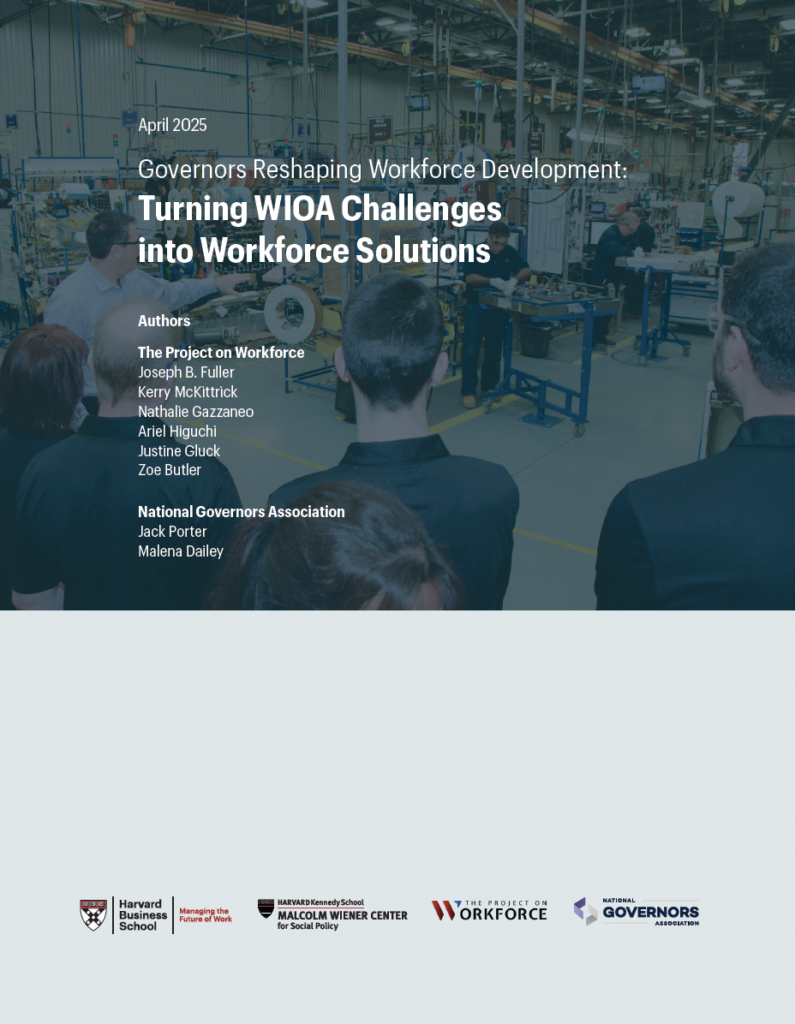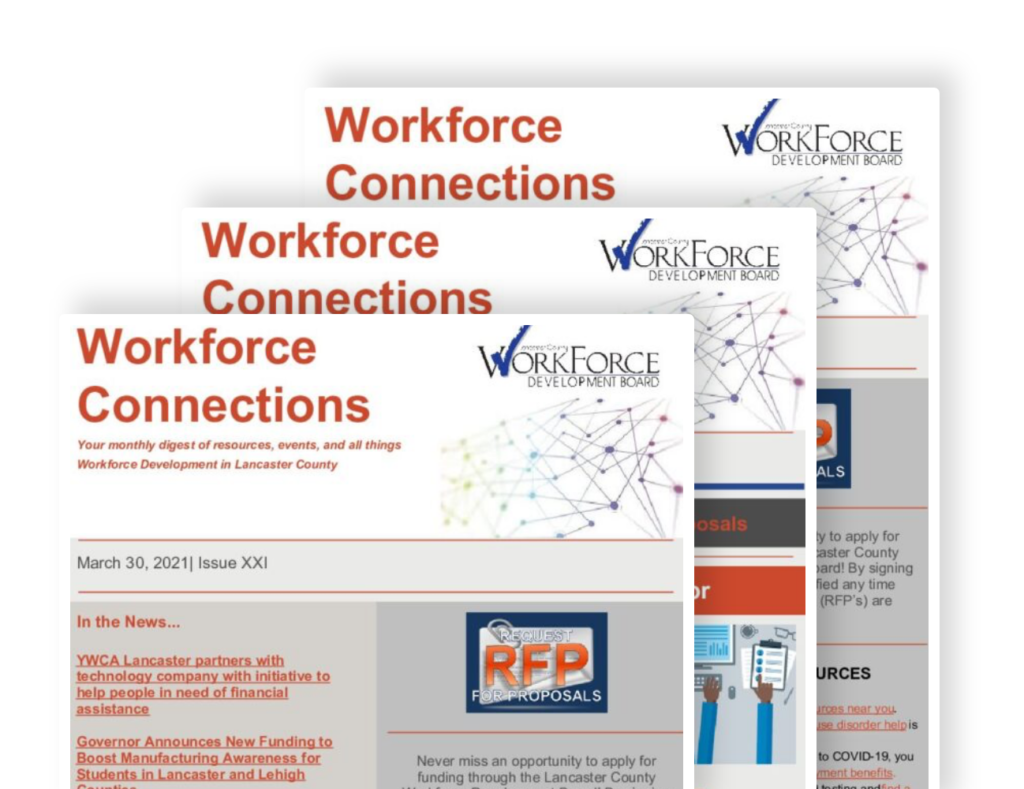The Project on Workforce and National Governors Association release a new report on how Governors are leveraging WIOA and other policies to design, fund, and implement workforce development strategies in an evolving economic landscape.
Authors: Joseph B. Fuller, Kerry McKittrick, Nathalie Gazzaneo, Ariel Higuchi, Justine Gluck, Zoe Butler, Jack Porter, and Malena Dailey

The Workforce Innovation and Opportunity Act (WIOA) grants Governors significant authority to shape their state workforce systems. Yet, little research explores how they use those powers to strengthen their economies and expand access to employment and training.
To bridge that gap, the Project on Workforce conducted in-depth interviews with Governors’ workforce development policy advisors in 34 states and technical surveys of workforce administrators in 17 states. Our research examines how Governors are leveraging WIOA and other policies to design, fund, and implement workforce development strategies in an evolving economic landscape.
Key Findings
1. States are shifting organizational structures to improve workforce governance. Over half of advisors reported that governance structures have a significant impact on how they address workforce challenges and administer public funds. To elevate workforce development as a policy priority, some Governors have designated advisors or created offices within their Executive Office to serve as central workforce policy coordinators. States are also merging or realigning state agencies to better collaborate across silos, streamline responsibilities, and improve accountability.
2. States are adopting stakeholder-driven approaches to WIOA planning. Some states are integrating the WIOA planning process into broader economic development planning, elevating stakeholder engagement to a core strategy. Other states continue to view WIOA planning as a compliance exercise that is more burdensome than it is valuable. While many states seek additional federal flexibility with WIOA planning, interviewees also shed light on opportunities to leverage the process to advance state goals by increasing community outreach.
3. States are investing in workforce services to attract and retain businesses. More than 1 in 4 states mentioned investments in clean energy and semiconductor manufacturing, and 1 in 5 states discussed broadband infrastructure and healthcare as industries of focus. States are deploying similar strategies, such as providing incentives to businesses to hire individuals with barriers to employment, creating customized training programs and developing tailored business services to help them navigate the workforce system.
4. WIOA funding challenges are prompting states to seek alternative solutions. Eligibility restrictions and unpredictable funding levels constitute key obstacles to reaching state workforce objectives. Some states are supplementing WIOA by braiding other funding sources, like federal education grants, state funds, or philanthropic dollars. Many rely on the Governor’s Reserve Fund (GRF) just to administer programs, with more than half of states using it to backfill administrative costs. Meanwhile, 54% of states are using the GRF to seed innovative pilots.
5. States are expanding training programs and supportive services to engage new workers. More than 80% of Governors’ advisors mentioned initiatives to strengthen the youth workforce pipeline, including by engaging K-12 students in career and technical education pathways. Others are focusing on growing the workforce by reaching populations with barriers to employment, including justice-involved individuals and Indigenous populations. Wraparound services are becoming an increasing priority. More than 60% of advisors highlight childcare as a key focus, more than half emphasize career navigation, and a third mention transportation and housing.
About the Project on Workforce at Harvard
The Project on Workforce is an interdisciplinary, collaborative project between the Harvard Kennedy School’s Malcolm Wiener Center for Social Policy, the Harvard Business School Managing the Future of Work Project, and the Harvard Graduate School of Education. The Project produces and catalyzes basic and applied research at the intersection of education and labor markets for leaders in business, education, and policy. The Project’s research aims to help shape a postsecondary system of the future that creates more and better pathways to economic mobility and forges smoother transitions between education and careers.
About The National Governors Association
The National Governors Association (NGA)—the bipartisan organization of the nation’s governors—promotes visionary state leadership, shares best practices and speaks with a collective voice on national policy. Founded in 1908, the National Governors Association (NGA) is the collective voice of the nation’s governors and one of Washington, D.C.’s most respected public policy organizations. Its members are the governors of the 55 states, territories and commonwealths. NGA provides governors and their senior staff members with services that range from representing states on Capitol Hill and before the Administration on key federal issues to developing and implementing innovative solutions to public policy challenges through the NGA Center for Best Practices. NGA also provides management and technical assistance to both new and incumbent governors.
Please direct inquiries to: Kerry McKittrick (kerry_mckittrick@gse.harvard.edu) and Jack Porter (jporter@nga.gov)
Suggested Citation: Joseph B. Fuller, Kerry McKittrick, et al. (April 2025). Governors Reshaping Workforce Development: Turning WIOA Challenges into Workforce Solutions. Published by the Harvard Kennedy School.
Source: The Project on Workforce
